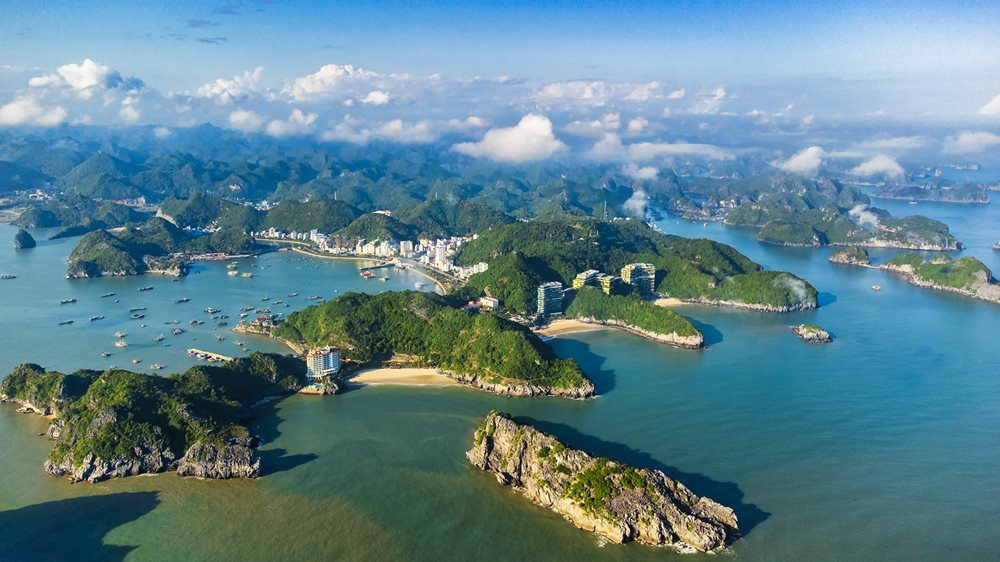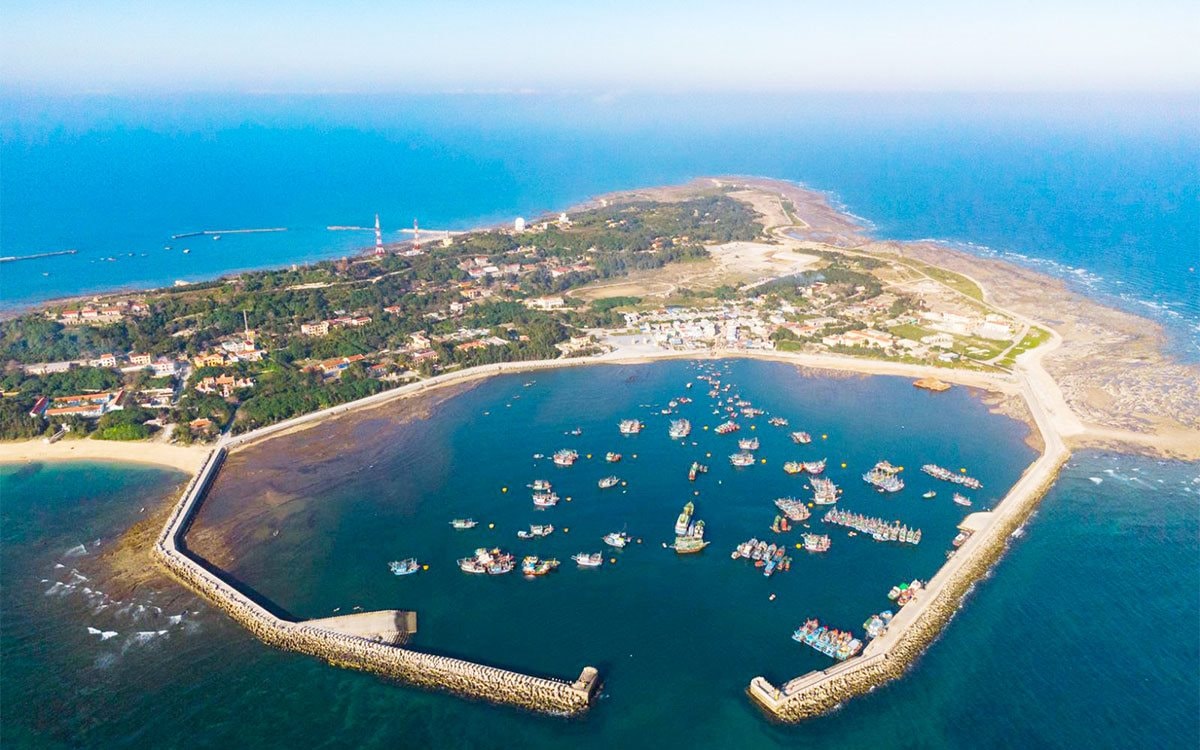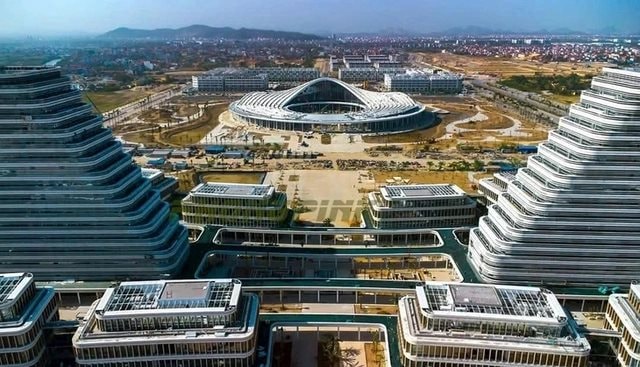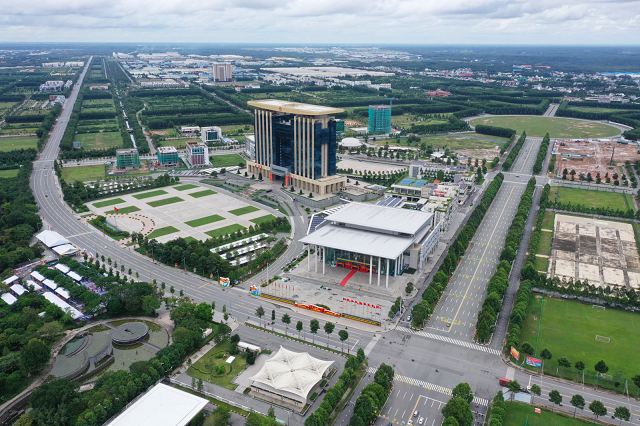Hai Phong city has proposed a plan to restructure its administrative units at the communal level, aiming to establish 50 new communal-level units, including 24 wards, 24 communes, and 2 special districts. This move is a part of the city’s broader strategy to streamline its administrative system and boost socio-economic development.
One of the key focuses of this restructuring is the establishment of two special districts: Cat Hai and Bach Long Vi. Cat Hai Special District is envisioned to encompass the entirety of the current Cat Hai district, spanning an area of 286.98 km² and housing a population of 71,211 individuals. Cat Hai holds significant strategic value for Vietnam, playing a crucial role in safeguarding national maritime sovereignty and security. It boasts the Long Chau archipelago, located approximately 50 km from the mainland, which serves as a vital forward outpost. Additionally, the Cat Ba archipelago, recognized by UNESCO as a World Biosphere Reserve and a Natural World Heritage Site, is renowned for its diverse ecosystem, stunning beaches, and vast tourism potential.

Proposed Cat Hai Special District in Hai Phong City, encompassing the entirety of the current Cat Hai district.
The establishment of Cat Hai as a special district is expected to bring about several benefits. It will enjoy preferential policies that will streamline administrative processes and enhance governance efficiency. Additionally, it will foster economic growth and social development, particularly in the realm of maritime and tourism industries, ultimately improving the livelihoods of its residents.
Cat Ba island, part of the Cat Hai district, has already witnessed significant tourism growth. In 2024, it is estimated to have welcomed over 3.6 million visitors, including approximately 1 million international tourists, surpassing its targets. The revenue generated from accommodation and dining services in the same year exceeded VND 3,300 billion, reflecting a healthy tourism industry.
Turning our attention to the proposed Bach Long Vi Special District, it is planned to encompass the entirety of the current Bach Long Vi island district, covering an area of 3.07 km² and housing a population of 686 people. Bach Long Vi island holds a unique strategic position as the farthest island from the mainland in the Gulf of Tonkin, approximately 110 km from Hai Phong city. Its establishment as a special district aligns with Vietnam’s strategic direction to maximize the potential of this island, which plays a crucial role in national defense and maritime sovereignty.

Bach Long Vi Island – the farthest island from the mainland in the Gulf of Tonkin. Image source: BP
The transformation of Bach Long Vi into a special district is expected to bring about much-needed development to the island. Currently, the island’s 686 residents face challenges due to limited access to freshwater, electricity, and transportation. By becoming a special district, Bach Long Vi will attract increased investment in critical infrastructure, such as water supply systems, renewable energy sources like wind and solar power, healthcare facilities, educational institutions, and improved transportation. This will not only enhance the quality of life for current residents but also encourage more people to settle on the island, strengthening Vietnam’s presence in the region.
The proposal to establish Bach Long Vi as a special district aligns with Vietnam’s Resolution 36-NQ/TW, which outlines the country’s strategy for sustainable marine economic development, and Resolution 45-NQ/TW, which focuses on the development of Hai Phong city. The special district is expected to contribute to the realization of Vietnam’s goals of fortifying its outlying islands as robust economic and defense strongholds while also asserting its maritime sovereignty.

Hai Phong’s new administrative center will be located in the current Thuy Nguyen city.
In other news, according to the Hai Phong City Statistics Office, the city’s total state budget revenue for April 2025 is estimated at VND 10,041.7 billion. This includes domestic revenue of VND 4,300.8 billion and revenue from import-export activities amounting to VND 5,740.9 billion.
For the first four months of 2025, Hai Phong’s total state budget revenue reached VND 57,925 billion, equivalent to 49.06% of the plan assigned by the Municipal People’s Council and reflecting a 37.4% increase compared to the same period in 2024. Domestic revenue accounted for VND 32,848.1 billion, marking a 44.33% surge compared to the corresponding period last year, while revenue from import-export activities amounted to VND 24,483.8 billion, representing a 32.64% increase.
As of April 26, 2025, Hai Phong had 1,070 valid foreign-invested projects (FDI) with a total investment capital of USD 38 billion. The city attracted USD 516.98 million in FDI from the beginning of the year until April 26, 2025, including registered capital for new projects, additional capital for existing projects, and capital contributions and share purchases by foreign investors. Additionally, 46 new FDI projects were granted investment registration certificates, with a total registered capital of USD 365.78 million.
The Economic and Social Development and Budgetary Affairs: A Parliamentary Discussion
“On May 23rd, alongside reviewing and providing feedback on legal projects, the National Assembly will hold intra-party discussions regarding the implementation of the socio-economic development plan and the state budget for the first few months of 2025.”
Implementing an “Export Incentive” Policy for Businesses
To stimulate economic growth and achieve development targets, Delegate Hoàng Văn Cường suggests implementing aggressive measures to support export businesses. He proposes a “reward-based export policy”, which involves offering incentives and removing legal obstacles faced by stagnant real estate projects. Additionally, encouraging private investment and expediting a mechanism for placing orders with large enterprises for state investment tasks are key aspects of this strategy.





















